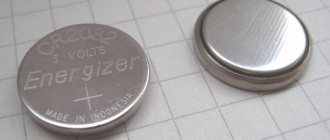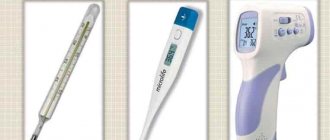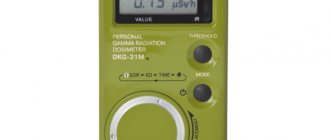Nowadays, electronic devices are replacing mechanical ones in almost all areas of activity. Electronics are more convenient, more practical, more elegant, although they are inferior in terms of affordability and reliability. But for scales this statement is not entirely applicable. Scales are a device that is difficult to do without both at home and in production; by analogy with other devices, they can also be mechanical and electronic. The principle of operation of the former is quite simple and transparent, with regard to the latter there are many questions and ambiguities. Let's try to understand how electronic floor scales work and what is the procedure if they suddenly fail.
Design
Electronic scales include:
- strain gauge;
- display;
- printed circuit board with microcircuit.
The display is designed to display weight; there are also models with the ability to record indicators of different time periods for subsequent comparison. And the most modern and expensive models have many built-in sensors that allow you to determine the internal structure of the body by the percentage of fat, muscles, and bones.
Packaging and other types of desktop electronic scales
Depending on the scope of application, it is recommended to choose table scales of one type or another. There are several types of tabletop weighing equipment:
- Packing. Designed for packaging and portion weighing of goods. Packaging desktop electronic scales have a limited range of functions. Used in retail points of sale, production and packaging shops.
- For the counter. This is the most common type of scale used in trade. The main function is to calculate the cost of a product based on its weight and the entered price. Often countertop scale models have a two-sided display to show measurement results from both the seller and buyer sides. Based on their design features, they can be divided into devices without a stand (the display is located in front of the platform or bowl), with a stand (the screen is at the buyer’s eye level), and pendant (the control unit and keyboard are located at the top, and the platform or bowl is at the bottom).
- Mercury M-ER 326AF
4 900 ₽ 3 690 ₽
3 690₽
https://online-kassa.ru/kupit/mercury-m-er-326af/
OrderMore detailsIn stock
- Atol LS5X
7 reviews
36 463 ₽
36 463₽
https://online-kassa.ru/kupit/atol-ls5x/
OrderMore detailsIn stock
- Scales Cas ER-Jr-30CBU
11 352 ₽
10 525₽
https://online-kassa.ru/kupit/vesy-cas-er-jr-30cbu/
OrderMore detailsIn stock
- With label printer. Used in customer self-service areas. The buyer independently enters the product code or presses the button with the image of the required product to print a label with a barcode. Such scales are often installed in supermarkets in the vegetable, fruit or grocery departments.
- Counting. The main function is the calculation of piece goods. Suitable for use in retail outlets where small items are traded.
All types of table scales differ from each other. First of all, functionality. While retail devices used behind the counter automatically calculate the cost of an item based on its weight and the indicated price per kg, this function is optional in packaging scales. Budget models of such equipment are intended solely for determining weight.
At the same time, packaging scales can additionally have a mode for accounting for piece goods. But to calculate the number of items, equipment of this type requires preliminary configuration. In counting scales, this is the main function, and to implement it you just need to press a couple of buttons.
We'll tell you which table scales from our catalog are right for your business!
Leave a request and receive a consultation within 5 minutes.
Housing material
Most often the case is made of plastic or glass. Glass appliances are certainly more reliable and more attractive on the outside, however, they must be cared for very carefully. It is enough to drop a cup on them, and the devices will fail forever. If all operating rules are followed, glass products will serve you for many years. There are also scales made of wood; they have a very pleasant tactile sensation, but the price of such a device is not affordable for everyone. The same can be said about “stone” products, heavy and extremely expensive, although impressive in appearance.
Internal organization
The operating principle of electronic scales is completely different from the basic functioning of mechanical scales. Frames are installed under each leg to respond to any changes. It’s easier to say, when a person stands on the device, these frames are deformed in a special way and produce the result . Moreover, they are deformed in such a way that it is impossible to notice these changes with the eye or even a level.
A microscopic plate - a strain gauge, less than 2 cm wide - is the main sensory unit of a floor-standing and any other electronic device.
This plate is attached to the frame using glue or compound. Three wires emanate from it, providing resistance. When you place something on the device, the frames located in the corners bend and distribute excess weight among themselves. By summing the data from each device, the total value is calculated.
The bridge itself is a quadrangle with a resistor attached to each side. In this case, power passes through one diagonal, and readings are transmitted through the other. Electricity moves through wires. Scales designed in this way provide maximum protection for the sensors, which can only be damaged through severe mechanical impact.
Electronic scale board
What to do if the scales fail
The main problem with the breakdown of electronic devices is related to the malfunction of strain gauges. If the maximum weight is exceeded, the structural elements, namely the frame, simply bend. To restore functionality, simply straighten them.
If it is impossible to determine whether the device is faulty from the outside, you will have to check it with a tester.
To do this, each sensor must be disconnected from the board, and then measure the resistance of all three wires. If in some corner the resistance differs from the norm, then the cause of the malfunction has been found. After this, disconnect the plate secured with glue. We do this very carefully, since any mechanical damage will negate all efforts and cause complete breakdown of the unit.
Inside we see a copper plate with three wires. It happens that one wire comes off. In this case, restoring the fastening will restore the functionality of the entire device. What happens is that the sensor simply died. Then you need to buy a new one. As a rule, this is not a problem - there are a huge number of different strain gauge models on the market that can be used for any type of scale. The only nuance that may arise later is the need to do calibration. If you do not select and adjust the sensor to the required parameters, the device will not work.
Calibration
The load cell is unique in its structure, and even if you compare products from the same batch and from the same manufacturer, you can see differences; the bridge connections will still have some kind of error. With the help of calibration, such an error is eliminated.
Considering the fact that the total weight is calculated by summing the readings, it is possible to completely exclude one sensor from the process if it is faulty. This is done either by releasing it from the load, or by simulating the desired values using simple resistors. The first option is suitable for cases where the sensor measures incorrectly or is incorrectly calibrated. The second involves disconnecting the faulty unit, after which its measurement will be perceived by the device as a zero value.
Almost anyone can repair electronic scales, since their structure is nothing more than a combination of resistors and a board.
Portable electronic scales up to 500 g: detailed review and testing
Small electronic scales with a maximum weighing weight of up to 500 grams. The device is equipped with a monochrome LCD display, as well as a strain gauge with high accuracy of weight measurement (0.01 g). In this review, we'll look at the scale's packaging, check the build quality, and also conduct tests on the stated measurement accuracy.
You can buy such electronic scales on Aliexpress Here or Here
Price at the time of publication: $8.65
You will find more interesting products from Aliexpress in my telegram channel
Content
- Specifications
- Package
- Appearance
- Functionality
- Testing
- conclusions
Specifications
| Weighing range | 0.01-500 grams |
| Measurement accuracy | 0.01 grams |
| Weight unit | Gram, ounce, troy ounce, pennyweight, pound, grain, carat |
| Housing material | Plastic |
| Case size | 125*105*20 mm |
| Nutrition | 2 X AAA |
Package
Electronic scales are supplied in a small blue cardboard box, on which an image of the scale is printed, weight units are indicated, and there is also brief technical information.
On the side of the box the maximum weighing limit is 500 g with an accuracy of 0.01 g.
Appearance
Inside the box there are scales in a plastic container. There is a small recess at the bottom of the container, with which you can easily reach the scales.
The set of scales was extremely minimal: electronic scales, two containers of different capacities and instructions. There were no batteries or other power sources included.
The two weighing containers have different capacities and, accordingly, sizes. The dimensions of the large container are 130*110*20 mm, the small container has a square shape, with overall dimensions of 105*105*8 mm. Both bowls are made of ordinary, transparent plastic.
The instructions are offered in two languages: Chinese and English. The instructions contain descriptions of the various modes of operation of the device, as well as tips for proper operation of the scales.
The working surface of the scales was wrapped in shipping film. For ease of operation and accuracy of measured readings, the film was carefully removed.
After removing the film, you can become more familiar with the appearance and interface of the scales.
On the front panel there is a square work surface made of thin sheet metal connected to a load cell. At the bottom there are four function buttons, as well as a small LCD display.
Functional buttons are designed to control the scales, specifically:
- Power button (turns on and off electronic scales);
- Button “M” (Mode, switches units of measurement, and is also used for some other actions);
- “PCS” button (calculation of the number of pieces, with this option, the scales can be used as a counter);
- Button “T” (tare function, resets the mass of an object on the scales).
On the back of the scale there is a compartment for two AAA batteries, as well as a small sticker with the weighing range and battery type.
Functionality
After turning on the scale, the display showed the current weight of 0.00, as well as the default unit of measurement “g” grams.
Container function
Putting a small container on the scales, I got a weight of 24.74 g. Using the tare function (T button), I reset the weight to zero. If the container is removed from the scales, we will see a negative weight of -24.74 g. In order to return the scale readings to normal (remove the minus value), you must press the “T” button again and the current weight will become 0.00 g.
Units
If you need to weigh something not in the metric system of units (SI), but in another (American or British apothecary system of weights), then the “Mode” function will help you with this. By pressing the “M” button successively, you can see the weight of the object in various units of measurement:
- g (grams)
- gn (grain)
- dwt (pennyweight)
- oz (ounce)
- ozt (troy ounce)
- t (to be honest, I still haven’t figured out what unit of measurement this is)
- c (carat)
Mass calculator and counting function
With this function it is possible to use scales to count the number of various small parts. This option works as follows:
1) Turn on the scales and weigh the required number of items. Then hold down the “PCS” button for three seconds, after which you need to press the “M” button to set the number of pieces of objects to be measured (25, 50, 75, 100). After you have selected the required number of items (in my case, these are 25 screws), you need to press the “PCS” button again.
2) We remove one screw from the scales and see that the number on the display has changed from 25 to 24. Thus, you can easily count a small number of items (up to 100).
You can exit the mass calculator mode by pressing the “M” (Mode) button.
Auto calibration function
The scales have an automatic calibration function. To do this, you need to have an accurate, reference weight (weight) equal to the maximum weighing weight (in our case, 500 grams). I did not calibrate the scales, since I do not have such a weight. The calibration procedure goes like this:
- With the scales turned off, simultaneously press the power button and the “M” (Mode) button;
- The scales turn on with the value 500.00 flashing;
- Place the reference weight on the scale (preferably in the center);
- The display shows the word “PASS”;
- Remove the weight and turn off the scale;
- The calibration process is completed.
Testing
To test the scales, I had a calibration kit, which included 5 weights: 20 g, 10 g, 5 g, 2 g, 1 gram.
First, two weights with a mass of 20 g and 10 g were weighed alternately. The discrepancy between the measured mass and the reference mass of two weights was 0.02 grams in both cases.
Then the remaining weights with masses of 5 g, 2 g and 1 gram were weighed. In this case, a slight difference was detected with a weight of 2 grams; the difference between the measured weight and the reference weight was 0.01 grams.
Next, I installed all the weights on the scales and weighed them. The measured weight was 38.06 grams.
At the end of the tests, I tried to measure a mass that was greater than the maximum weighing limit (“pancake” from a collapsible dumbbell of 800 grams). When weighing such a mass, the scales display a “0-LD” error, indicating that the upper measurement limit has been exceeded.
conclusions
During operation, the electronic scales showed themselves to be quite good. Of course, it is immediately worth noting the fact that the results of weighing the standard weights still leave questions. The measured error of a weight with a mass equal to or greater than 10 grams is 0.02 grams. On the other hand, it is also impossible to completely trust the “reference” weight of weights, since there is no way to check their mass with scales that have been verified by the metrological service. Finally, you can take a 500 gram weight and calibrate the scale (if you are confident in the accuracy of the weight).
For most people, such high accuracy of weight measurement is clearly not required: for example, it is possible to weigh the required amount of seasoning for a dish with an error of 0.02 grams. It's also worth considering the $8.65 price the scale sells for. I was pleased with the purchase; for the price, these are quite good scales.
Pros:
- Light weight and compact size
- Powered by commonly used AAA batteries
- Wide range of units of measurement
- Good weighing accuracy (quite good for household needs, even taking into account small discrepancies during tests)
- Mass calculator function
- Auto calibration function
- Two convenient weighing containers included in delivery
Minuses:
- Weighing accuracy has a discrepancy of 0.02 grams, on the reference weight 10 grams and 20 grams
- Lack of instructions in Russian
- “Poisonous” blue display backlight
Models
There are various models of electronic measuring instruments on the market. Let's highlight the most popular:
- Medisana 40419 TargetScale. Multifunctional scales costing about 15,000 rubles. It is possible to synchronize them with any gadget, allowing you to view the readings right in front of you, and not under your feet. Allows you to display graphs based on weight, body fat, blood pressure, body temperature, and sugar levels. It has a very interesting modern design and at the same time has simple and convenient controls.
- Tefal PP 1110. Inexpensive scales, the platform of which is made of glass. Maximum weight – 160 kg, measurement accuracy within 100 grams, automatic on and off function. There are no requirements for floor coverings - they work on carpets, tiles, and linoleum. A simple model for which the functionality described in the first model is not available, but the price is absolutely affordable.
- SUPRA BSS-6200 GN. A budget device that allows you to calculate body mass index, fat and muscle content.
- Beurer Bf-100. The most accurate specimen has 8 electrodes that transmit information to a computer that can remember data for several users.
Electronic scales are a necessary device for regular use. They allow you to control body weight, fat and muscle composition, and if we talk about luxury models, then other important vital indicators. By purchasing a quality item, you can save on purchasing other devices and guarantee the accuracy of the measurements obtained. And having studied the characteristics of electronic scales and the principle of their operation, you will be able to quickly eliminate any problems that arise in their system.
Technical characteristics and wide range of home weighing devices
For a long time, humanity has used mechanical scales. This outdated mass measuring instrument is increasingly being replaced by more modern and accurate electronic devices with modern design and various additional functions.
Two types of floor scales are an indispensable assistant in the home today:
- traditional mechanical scales, the operating principle of which is based on the readings of a stretching spring,
- advanced electronic scales, the operating principle of which is based on the passage of electric current through a special digital sensor, and the battery is a compact miniature battery.
These two types of high-quality weighing devices are quite common today, and to find out which of these devices is the best, let’s look at the technical characteristics of these measuring instruments.
So, all these floor-standing home scales are easy to use and easily allow you to determine your body weight, monitoring the health and well-being of not only a professional athlete, but also an ordinary person who regularly measures and monitors their weight changes.
The best home scales and high-quality floor scales have a wide range and an affordable price range; today you can easily buy them in specialized stores.
The offered range of scale models is so wide and diverse that it represents such famous world brands as:
- Beurer and Bosch,
- Supra and Gorenje,
- Kambrook and Tefal,
- Sinbo and Salter,
each of which allows you to choose a modern model of fairly high build quality and performance, but has both its advantages and its disadvantages.
So, mechanical floor scales for the home are used according to an old ingrained habit, because they can significantly save money, since they have a low price value.
They do not require additional costs to replace batteries, but have a significant error, but are still in demand.
Electronic floor scales for the home have an attractive appearance and modern design, greater accuracy in measurement results and are able to control not only the weighed weight, but also such physiological parameters of the human body as the mass of fat and muscle tissue, maintaining them at a constant rate.
The error of such electronic devices is minimized, and the functionality is increased by the introduction of additional options, where the measurement process is carried out in a short-term pulse mode.
True, these smart home devices require additional financial costs in replacing batteries and minor technical care in terms of indicators such as room temperature and surface evenness, as well as strict adherence to operating rules, and their price is much higher compared to mechanical scales.










